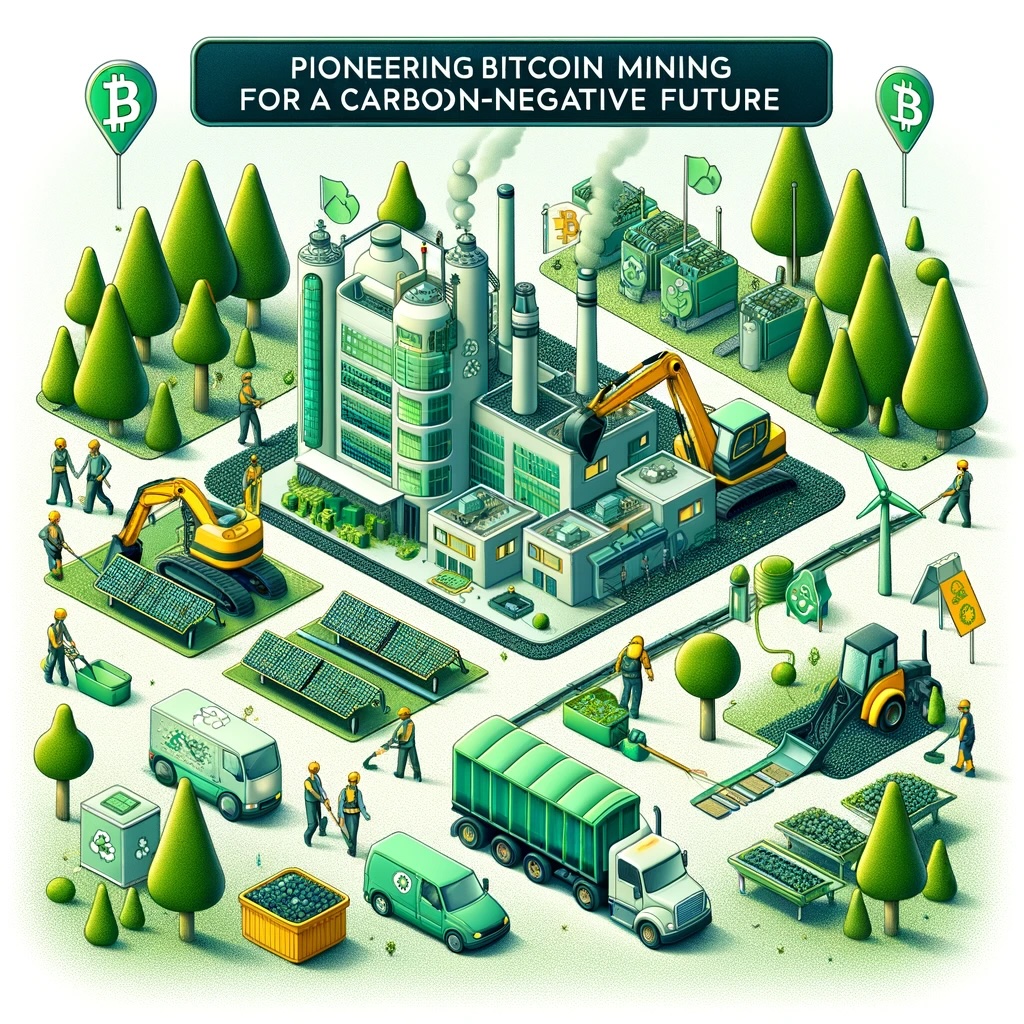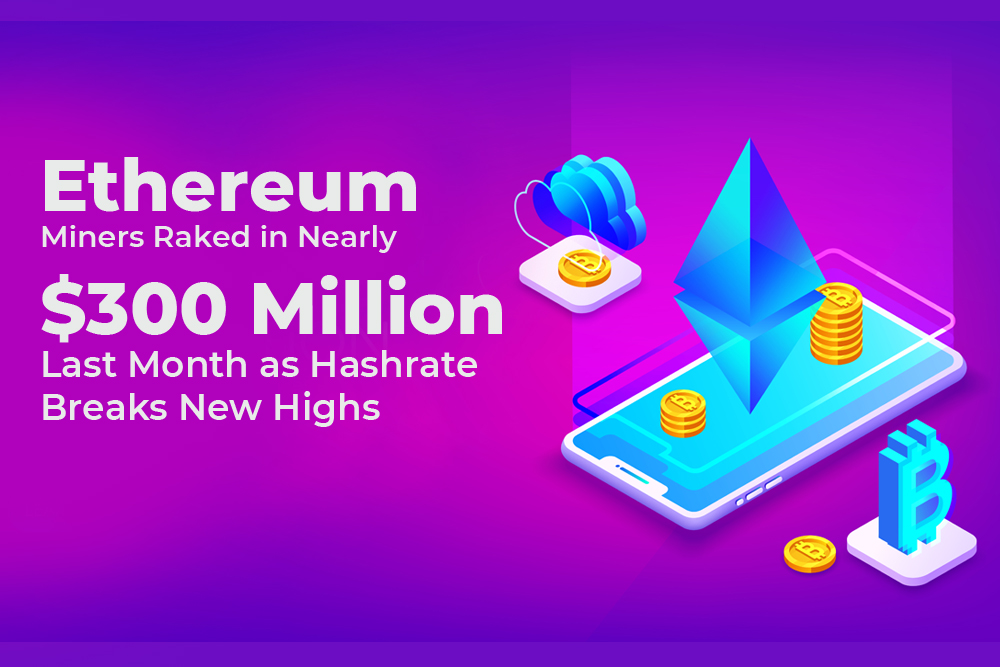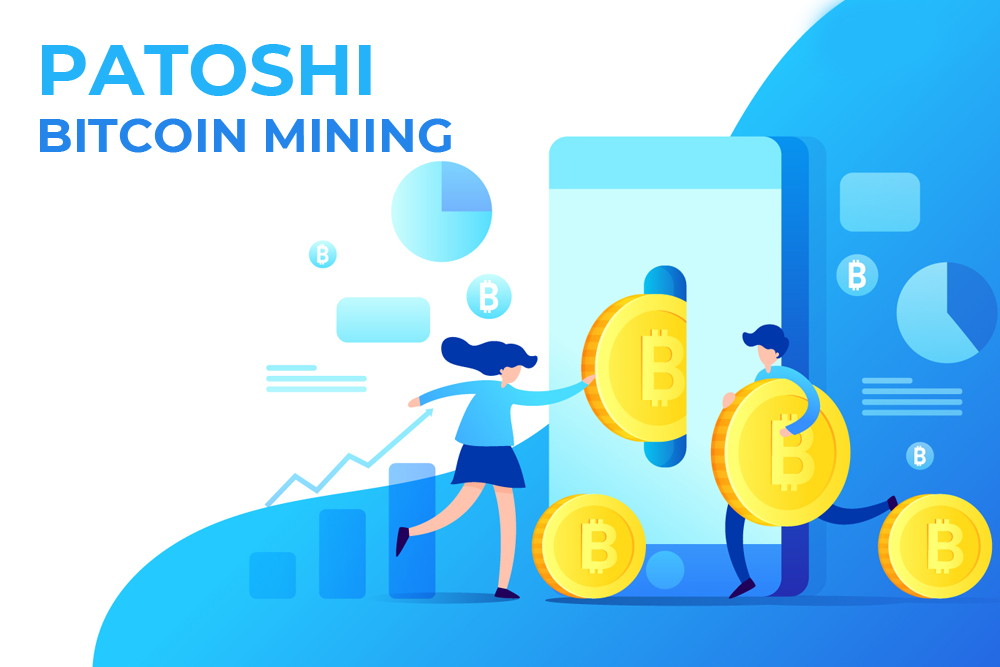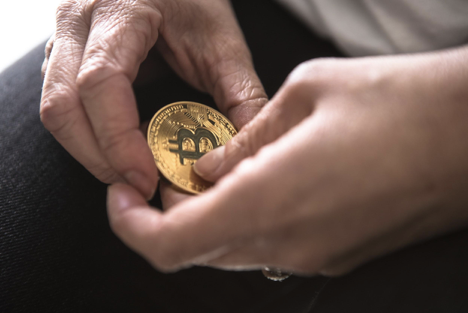
Bridging the Gap: Bitcoin Mining as a Catalyst for Renewable Energy Growth in Africa
The African continent, with its vast untapped renewable energy resources and growing technological adoption, is at the cusp of a revolution. This transformation is not just in how energy is generated and utilized but also in the economic landscapes reshaped by the advent of Bitcoin mining. The fusion of Bitcoin mining with renewable energy sources across Africa is emerging as a powerful tool for economic development, energy efficiency, and technological advancement.
The Energy Context in Africa
Energy access remains a pivotal challenge in Africa. Despite abundant natural resources, a significant portion of the African population still lives without reliable access to electricity. This situation is primarily attributed to the lack of infrastructure, financial constraints, and the remoteness of rural areas. As a result, many communities are forced to rely on expensive and environmentally harmful energy sources like diesel generators.
The Emergence of Renewable Energy and Microgrids
In recent years, there has been a growing focus on developing renewable energy sources in Africa. Solar and wind energy projects are increasingly being viewed as viable solutions to the continent’s energy woes. However, these projects often face financial viability challenges. High capital costs and the uncertainty of continuous demand for energy make it difficult for these projects to achieve a sustainable model.
In response to these challenges, the concept of microgrids has gained prominence. Microgrids are localized energy grids that can operate independently or in conjunction with the area’s main electrical grid. They offer a flexible and efficient way of delivering energy, particularly in remote and rural areas.
Bitcoin Mining: A New Dimension to Energy Demand
An innovative solution to the demand uncertainty in renewable energy projects is the introduction of Bitcoin mining. Bitcoin mining requires a significant amount of energy, and utilizing excess renewable energy for this purpose can ensure a steady and predictable demand. This not only helps in reducing energy wastage but also provides a consistent revenue stream to sustain these energy projects.
Projects like Gridless are at the forefront of this innovation. They are establishing small-scale Bitcoin data centers in conjunction with renewable energy sources, particularly in rural areas where energy access is most needed. This model presents a win-win situation: it provides a viable use for excess renewable energy while also bringing economic opportunities to local communities.
Economic Impacts and Sustainability
The economic implications of integrating Bitcoin mining with renewable energy sources are profound. By providing a steady income stream through Bitcoin mining, renewable energy projects become more financially viable, reducing the reliance on government subsidies or external funding. This approach has the potential to transform energy projects from cost centers into profitable ventures.
Moreover, the utilization of renewable energy for Bitcoin mining addresses the common criticism of the high environmental cost of cryptocurrency mining. By using excess or stranded energy from renewable sources, this model promotes a more sustainable form of mining, aligning with global efforts to reduce carbon emissions.
Case Studies and Real-World Examples
The success of this model is evident in various African countries. In Nigeria, Kenya, Ethiopia, and Malawi, the combination of Bitcoin mining and renewable energy is proving to be a viable solution for energy challenges. These projects are stabilizing local microgrids and providing much-needed economic stimulation in rural areas.
The technical blueprint for such projects, provided by organizations like Gridless, includes detailed guidelines on setting up small-scale Bitcoin mining operations. This open-source information covers everything from site assessment to miner and energy management, offering a comprehensive roadmap for replication and scaling.
The Broader Societal Impact
Beyond the economic benefits, the fusion of Bitcoin mining and renewable energy is paving the way for technological advancement and energy independence in African communities. It empowers local populations, fosters technological literacy, and promotes the development of local industries. This model is not just about electrification; it’s about creating a self-sustaining ecosystem that can drive long-term socio-economic development.
The Future Outlook
The integration of Bitcoin mining with renewable energy in Africa represents a paradigm shift in how we approach energy consumption and economic development. It demonstrates the potential of decentralized, technology-driven solutions in addressing global challenges. As more such projects come to fruition, they are likely to inspire similar initiatives globally, potentially transforming the renewable energy landscape and the cryptocurrency mining industry.
The innovative approach of combining Bitcoin mining with renewable energy in Africa is more than just an energy solution; it’s a blueprint for a sustainable and economically empowered future. It’s a testament to the resilience and ingenuity of communities and a model that could redefine energy and economic landscapes worldwide.
Open your free digital wallet here to store your cryptocurrencies in a safe place.

Revolutionizing Energy Access: The Role of Bitcoin Mining in Sub-Saharan Africa
The quest for universal energy access is one of the most pressing issues of our time, critical to improving the quality of life globally. In this endeavor, Bitcoin mining emerges not just as a technological marvel but as a novel financial tool that can catalyze the development of energy infrastructure, particularly in energy-deprived regions like Sub-Saharan Africa (SSA).
Bitcoin Mining as a Catalyst for Energy Access
In SSA, the lack of electricity is a stark reality for over 600 million people. This energy deficit stifles economic growth, hampers healthcare and education, and perpetuates poverty. Bitcoin mining, with its considerable energy requirements, presents a unique opportunity in this context. By creating a demand for electricity, it can drive the development of energy infrastructure, particularly renewable sources.
The synergy between renewable energy and Bitcoin mining is already taking shape in various parts of SSA. Companies like Gridless in Kenya are leading this charge by utilizing hydropower for Bitcoin mining. These ventures ensure a consistent demand for electricity, making renewable energy projects more viable and financially attractive. Furthermore, they bring electricity to rural areas, often for the first time, dramatically transforming local communities’ lives.
Solar Power: A Sustainable Alternative for Mining
In regions where traditional mining is challenged by climatic conditions, solar power stands out as a sustainable alternative. The establishment of large-scale solar farms in countries like Morocco and the Seychelles reflects an increasing interest in using solar energy for Bitcoin mining. This approach not only mitigates the environmental impact of mining but also contributes to the energy grid, providing a two-fold benefit to the economy and the environment.
The path to integrating Bitcoin mining with energy development is not without its challenges. In many African countries, regulatory uncertainty and logistical hurdles, such as the difficulty in obtaining energy development licenses or importing mining hardware, persist. These challenges call for more supportive regulatory frameworks and investment in infrastructure to harness the full potential of Bitcoin mining in advancing energy access.
Financial Empowerment through Decentralization
Beyond the direct impact on energy access, Bitcoin mining offers financial empowerment through its decentralized nature. This feature of cryptocurrency is particularly significant in regions where financial systems are underdeveloped or inaccessible to large segments of the population. By providing a means of financial participation and privacy, Bitcoin mining can contribute to broader economic growth and empowerment.
The Broader Impact and Future Prospects
The potential of Bitcoin mining extends beyond just providing electricity; it represents a paradigm shift in how we approach energy and economic challenges in the developing world. Incentivizing the exploration of renewable energy sources for mining can lead to a revolution in the energy sector. This movement could propel many regions in SSA and beyond towards greater energy independence and economic stability.
Bitcoin mining, often under scrutiny for its environmental impact, holds untapped potential for global energy infrastructure development. By leveraging renewable energy sources and overcoming regulatory and logistical challenges, Bitcoin mining can significantly contribute to building out energy infrastructure, particularly in underserved regions. The future of Bitcoin mining thus holds the promise of not just electrifying regions but also of reshaping their economic landscapes, paving the way for a brighter, more connected world.
Open your free digital wallet here to store your cryptocurrencies in a safe place.

Pioneering Bitcoin Mining for a Carbon-Negative Future
In a groundbreaking report, self-proclaimed philanthropist Daniel Batten has unveiled a compelling vision for Bitcoin to emerge as a zero-emission network. Through the strategic utilization of carbon-negative energy sources, Batten contends that Bitcoin mining can not only offset its carbon footprint but also make a positive contribution to environmental preservation.
The Methane Capture Revolution
At the heart of Batten’s proposal lies a visionary concept: the combustion of stranded methane gas to power Bitcoin mining. This innovative approach has already gained traction worldwide, representing a crucial strategy in mitigating climate change. According to Batten’s comprehensive study, this process has the potential to slash the network’s emissions by a remarkable 63%.Currently, a mere 1.57% of the Bitcoin network relies on carbon-negative sources. Despite this modest figure, it exerts a significant -4.2% impact on the overall carbon intensity of the Bitcoin network. This seemingly small fraction holds the key to transforming the network into a carbon-negative powerhouse.
Exemplary Implementations
Batten’s research draws on a wealth of data from various flare gas Bitcoin miners, including industry leaders like Crusoe Energy in Colorado, Jai Energy in Wyoming, and Arthur Mining in Brazil. Additionally, the study highlights the commendable efforts of miners who are harnessing waste gases from animal farms, as seen in operations in Slovakia.
Enterprising Northern Irish farmer Owen has emerged as a trailblazer in the quest for sustainable Bitcoin mining. Teaming up with Scilling Digital Mining, Owen has harnessed biogas emitted from farm waste, redirecting it from the atmosphere towards the lucrative process of Bitcoin mining. This innovative approach not only aligns with principles of environmental stewardship but also holds the promise of newfound revenue streams for farmersMark Morton, the astute Managing Director at Scilling, envisions Ireland’s farming communities as the vanguard of this transformative technology. By capturing waste gas from agricultural activities, Ireland has the potential to make substantial reductions in its agricultural emissions. Moreover, this initiative could unlock a new source of income for farmers, providing a boost to the agricultural sector and setting the stage for a greener future.
Batten’s Call to Arms
Batten, once a philanthropist and venture capitalist, has now channeled his energies towards environmental advocacy, making Bitcoin mining his “most important mission.” In a recent presentation, he underscored the critical role of methane capture in the fight against climate change, positioning Bitcoin mining as a powerful agent of change.Batten’s research and advocacy serve as a stark reminder of the urgency in addressing climate change. As the world grapples with the repercussions of global warming and environmental degradation, innovative solutions like methane capture in Bitcoin mining offer a beacon of hope for a sustainable future.
Conclusion: A New Frontier in Bitcoin Mining
Daniel Batten’s report paints a compelling picture of Bitcoin mining as a carbon-negative endeavor with the potential to revolutionize the industry. Through the strategic harnessing of stranded methane gas, Bitcoin miners can emerge as unsung heroes in the fight against climate change. As pioneers like Owen and forward-thinking companies like Scilling lead the charge, we stand on the precipice of a paradigm shift – where Bitcoin mining evolves from an energy-intensive process into a powerful force for environmental preservation. It is a testament to the indomitable spirit of human ingenuity in the face of one of the greatest challenges of our time.
Open your free digital wallet here to store your cryptocurrencies in a safe place.

Flared Methane as a Sustainable Power Source for Cryptocurrency Mining
In recent years, the cryptocurrency mining industry has experienced tremendous growth. With the rise of Bitcoin and other digital currencies, mining has become a popular way to earn a profit by using specialized hardware and software to solve complex mathematical equations.
The Potential of Flared Methane in the Mining Industry
One area of potential growth in this industry is the use of renewable energy sources to power mining operations. As concerns about climate change continue to rise, many miners are looking for ways to reduce their carbon footprint and increase sustainability.
One type of renewable energy that has caught the attention of miners is flared methane. Flared methane is a byproduct of oil drilling, and it is often burned off because it is considered a waste product. However, this gas can be harnessed and used to generate electricity, which can then be used to power mining operations.
Companies Leading the Way in Flared Methane Mining
Several companies have already begun exploring the potential of flared methane as a power source for mining. For example, Upstream Data, a Canadian company, has developed a mobile mining rig that can be powered by flared methane. This rig is designed to be easily transportable and can be deployed to remote locations to take advantage of flared methane sources.
Another company, Crusoe Energy Systems, has developed a system that captures flared methane and converts it into electricity. This electricity is then used to power mining rigs that are located on-site. Crusoe’s system has already been deployed in several locations in the United States, and the company has plans to expand its operations in the coming years.
Overcoming Challenges in the Use of Flared Methane
The potential of using flared methane to power mining operations is significant. According to a report by the World Economic Forum, flared methane could provide enough energy to power up to 8,000 mining rigs. This would not only reduce the environmental impact of mining but could also provide a significant economic opportunity for the oil and gas industry.
However, there are also some challenges associated with using flared methane as a power source. One of the biggest challenges is the variability of methane flaring. Flaring rates can change rapidly, making it difficult to ensure a consistent supply of power. This can result in downtime for mining operations, which can be costly for miners.
Another challenge is the logistics of transporting and storing the gas. Flared methane is often located in remote areas, which can make it difficult and expensive to transport. Additionally, storing the gas can be challenging, as it requires specialized equipment and safety protocols.
Despite these challenges, the potential of using flared methane to power mining operations is significant. As the cryptocurrency mining industry continues to grow, the demand for renewable energy sources will only increase. Flared methane has the potential to not only provide a sustainable energy source for mining but could also provide economic benefits for the oil and gas industry.
The Future of Flared Methane as a Sustainable Power Source
As the industry continues to develop, it is likely that we will see more companies exploring the potential of flared methane as a power source for mining. With the right technology and infrastructure in place, this could be a game-changer for the industry, providing a sustainable and cost-effective solution for powering mining operations.
In conclusion, the use of renewable energy sources is becoming increasingly important in the cryptocurrency mining industry. Flared methane is one such source that has the potential to provide a sustainable and cost-effective solution for powering mining operations. While there are challenges associated with using this gas, the potential benefits are significant, and it is likely that we will see more companies exploring this option in the coming years.
Open your free digital wallet here to store your cryptocurrencies in a safe place.

Heating Your Home with Bitcoin Mining Rigs: Pros, Cons and Real-Life Cases
Bitcoin mining is the process of using specialized computer hardware to validate transactions on the Bitcoin blockchain and earn rewards in the form of newly minted Bitcoins. This process requires a significant amount of energy and generates a lot of heat as a byproduct. In recent years, some individuals have started using their Bitcoin mining rigs to heat their homes as an alternative to traditional heating methods.
Advantages of using a Bitcoin mining rig for heating
Cost savings
One of the main advantages of using a Bitcoin mining rig for heating is the cost savings. Bitcoin mining can be a profitable endeavor, and the heat generated by the rig can be used to offset the cost of heating the home. Additionally, using a mining rig for heat can also help to reduce the overall carbon footprint of the home, as it eliminates the need for fossil fuels or other non-renewable sources of heat.
Flexibility
Another advantage of using a mining rig for heat is the flexibility it offers. Many mining rigs can be easily moved from room to room or even from house to house, allowing individuals to easily adjust the heating in their home as needed. Additionally, some mining rigs can be controlled remotely, allowing individuals to turn the heat on or off and adjust the temperature from anywhere using a smartphone or computer.
Real-life examples of using a Bitcoin mining rig for heating
Qarnot Computing’s QH-80 heating system
One real-life example of using a Bitcoin mining rig for heating is a company based in the United States called Qarnot Computing. They have created a heating system called “QH-80” that is specifically designed for this purpose, it’s a small, plug-and-play device that can be used to heat a room or small apartment. The device is equipped with several high-performance computing chips that can be used for both mining and heating, with the heat being distributed through a series of built-in radiators. The company claims that the device can heat a room of about 150 square feet for roughly $30 per month, which is significantly less than the cost of traditional heating methods.
Kristoffer Koch’s home in Norway
A third example is a man from Norway named “Kristoffer Koch” who became a millionaire by investing in Bitcoin early on. He invested 150 kroner ($26.60) in 5,000 bitcoins in 2009 and forgot about it. When he rediscovered his investment in 2013, the value of his bitcoins had grown to $886,000, he decided to use a part of his fortune to install a heating system in his house that runs on Bitcoin mining. He claims that it’s cheaper and more environmentally friendly than the traditional heating methods.
Heat4Mine: Bitcoin Mining for Heating in the Netherlands
Heat4Mine is a Dutch company that provides a solution for using the heat generated by Bitcoin mining rigs to heat homes. They have developed a system that captures the heat generated by mining rigs and uses it to heat water, which is then distributed through a building’s heating system. This allows homeowners to offset the cost of heating their home with the profits generated from mining Bitcoin. The company claims that their system is a more sustainable and eco-friendly alternative to traditional heating methods, as it reduces the need for fossil fuels. According to their website, they have been providing this service since 2017.
Disadvantages of using a Bitcoin mining rig for heating
Initial cost of setting up the rig
Despite these advantages, using a Bitcoin mining rig for heating does have some drawbacks. One of the main disadvantages is the initial cost of setting up the rig. Mining rigs can be quite expensive, and the cost may not be worth it for those who only plan to use it for heating. Additionally, the noise and heat generated by the rig can be quite substantial, which may not be suitable for some individuals.
Regular maintenance and reliability issues
Another potential drawback is the fact that the mining rig will require regular maintenance, which can be time-consuming and costly. Additionally, mining rigs are not always reliable and may break down or malfunction, which can be a major inconvenience for those who rely on them for heat.
Conclusion
Despite these drawbacks, using a Bitcoin mining rig for heating is becoming an increasingly popular option for those looking for an alternative to traditional heating methods. As the price of Bitcoin continues to rise, the profitability of mining also increases, making it a more viable option for those looking to offset the cost of heating their home. Additionally, as the world continues to focus on reducing carbon emissions and becoming more energy efficient, using a mining rig for heat may become a more appealing option for those looking to reduce their environmental impact.
It’s important to note that the profitability and cost-effectiveness of using a mining rig for heat will depend on several factors, including the cost of electricity, the current price of Bitcoin, and the efficiency of the rig itself. Additionally, it’s also important to consider the noise and heat generated, and maintenance requirements before making a decision. It’s also important to note that while this is a potential use case, it’s not yet widely adopted or popular. It’s still a niche application of the technology.
In conclusion, using a Bitcoin mining rig for heating can be a cost-effective and energy-efficient alternative to traditional heating methods. It can also help reduce carbon footprint and offer flexibility to adjust heating as per need. However, it’s important to weigh in the initial costs, maintenance requirements, noise and heat generated and the overall profitability before making a decision. As with any technology, it’s important to keep in mind that it may not be suitable for everyone, but for those who it does work for, it can be a great way to save money and reduce their environmental impact.
Open your free digital wallet here to store your cryptocurrencies in a safe place.

Exploring the Use of Geothermal Energy for Bitcoin Mining: Opportunities and Challenges in El Salvador and Beyond
Introduction
As the cryptocurrency industry continues to grow, the energy consumption of Bitcoin mining has become a concern for many. Bitcoin mining, the process by which new bitcoins are created, requires high computational power, which in turn requires a large amount of energy. This has led to an increased focus on sustainable energy sources for Bitcoin mining. Geothermal energy, a renewable and low-carbon energy source, is one potential solution to this problem.
Advantages of Using Geothermal Energy for Bitcoin Mining
Geothermal energy has several advantages that make it an attractive option for Bitcoin mining. Firstly, geothermal energy is a reliable source of power as it is generated from the Earth’s heat, which is constant and abundant. Secondly, geothermal energy is relatively low-cost compared to other forms of renewable energy. This can help reduce the overall energy costs of Bitcoin mining operations. Lastly, geothermal energy has a low environmental impact, making it a sustainable option for Bitcoin mining.
One example of a company that is successfully using geothermal energy for Bitcoin mining is Genesis Mining, one of the largest cloud mining companies in the world. They have a geothermal-powered mining farm in Iceland, which allows them to use renewable and low-cost energy to mine bitcoins. This has helped them to reduce their overall energy costs and increase their profits. Another example is the case of El Salvador, where the government is actively promoting the use of geothermal energy for Bitcoin mining through incentives and regulations.
Limitations of Using Geothermal Energy for Bitcoin Mining
While geothermal energy has many advantages, there are also limitations to using it for Bitcoin mining. One limitation is that geothermal resources are not widely available, and are mostly concentrated in certain areas such as Iceland and New Zealand. This can make it difficult for companies to access geothermal energy, especially if they are located in areas without geothermal resources. Another limitation is the high cost of setting up geothermal power plants. This can be a significant barrier for companies that want to switch to geothermal energy for Bitcoin mining.
Current State of Research and Development
Despite these limitations, the use of geothermal energy for Bitcoin mining is an area of active research and development. Companies such as Genesis Mining are actively researching ways to improve the efficiency and scalability of geothermal energy for Bitcoin mining. Additionally, research and development of geothermal energy for Bitcoin mining can help increase the availability of geothermal resources, making it more accessible for companies around the world.
Conclusion
In conclusion, geothermal energy is a promising option for Bitcoin mining. It offers several advantages such as reliability, low cost, and low environmental impact. However, there are also limitations to using geothermal energy such as limited availability and high costs. With ongoing research and development, it is likely that geothermal energy for Bitcoin mining will become more widely available and cost-effective in the future. Countries like El Salvador are showing how it is possible to use geothermal energy to power Bitcoin mining operations while reducing environmental impact. By promoting the use of renewable energy sources and providing incentives for companies, governments can play a key role in encouraging the sustainable development of the cryptocurrency industry.
Open your free digital wallet here to store your cryptocurrencies in a safe place.

Ethereum Miners Raked in Nearly $300 Million Last Month as Hashrate Breaks New Highs

Can you imagine the speed required to make 250 trillion attempts to solve a puzzle in one second? Stop imagining! We already have the answer figured out for you!
On 6th October 2020, the Ethereum-mining hash rate made a new record by reaching a figure of 250 trillione hashes per second. Ether miners are more active than ever before, and the Ethereum network is now more powerful than ever before.
To your surprise, Ethereum is not a mineral found in the mountains. Miners have made $300 million without even stepping outside their homes. Without confusing you any further, let me explain how ETH mining can make you a millionaire.
What is Ethereum?
It is a platform that makes use of a blockchain database to allow developers to create applications on it. The apps that are built on Ethereum are decentralized; Any computer that connects to the Ethereum network can access these apps. You can make online payments, trade cryptocurrency, and sell products without the involvement of third parties like banks.
Ether (ETH) is Ethereum’s cryptocurrency that has $40 billion worth of market capitalization in 2020.
What is Hashrate?
It indicates the overall health or power of the Ethereum network. The combined computing power of all the mining machines is directly proportional to the hash rate; When power increases, the hash rate goes up. This means that the miners play a vital role in strengthening the cryptocurrency network.
Initially, low-power machines were used, but as the popularity of the network grew, more users jumped in, and more powerful mining rigs were introduced. This caused the hash rate to reach trillion hashes per second and enhanced the network’s security.
What is the hype all about? How are the hash rate and mining rigs related to money? Let us find out!
What are the Mining Rigs?
People spend thousands of dollars on building powerful mining rigs that can generate more ETH in less time.
Mining rigs are basically computers with an extremely powerful graphics processing unit. Application-Specific Integrated Circuits have now been introduced for mining purposes. Mining is not an easy task, so it requires a lot of energy in the form of electricity.
The main reason behind using GPUs and ASIC instead of simple CPUs is to lower energy consumption.
Components of a Mining Rig
-
Power Supply Unit
The capacity of the supply unit (in watts) must be greater than the total power consumption of all the units of your rig. If you have 4 GPUs that consume a total of 800 watts and other units consume 200 watts, a supply unit of at least 1000 watts is needed for the smooth working of the rig.
-
Hard Drive
Your SSD requirement depends on the operating system of your rig. A 120 GB hard drive is required for mining rigs that run windows. For Linux users, 60 GB SSD would get the job done.
-
Motherboard
The number of PCIe slot connectors in a motherboard corresponds to the number of GPUs that can be installed. ASRock H110 Pro BTC+, Asus B250 Mining Expert, and Gigabyte GA-H110-D3A are some of the best motherboards for mining. The average cost of these motherboards is around £110.
-
RAM
Your rig’s processing speed depends on the size of its RAM. At least 4GB RAM is required for fast calculations.
-
GPU
GPUs are the actual driving force in a rig, so make sure that you have plenty of them. GeForce GTX 1060, RTX 2080 Ti, and RX Vega 56 are some of the most popular graphics cards on the market.
Let me link all the dots here!
The Role of Mining Rigs
A powerful mining rig can make more attempts at solving puzzles in one second. More attempts mean that there are high chances of working out the right answer. When the right answer is generated, a new block is added to the chain, and the miner gets ETH as a reward. It would not be wrong to say that ETH is sitting in the coaxial cables of your rig.
How Ethereum Mining Generates Money?
Mining is not just about solving the mathematical puzzle but being the first miner to discover or guess the solution is a must for earning a reward. Millions of people are working on the same puzzle at one time, so the processing speed of your rig determines your success rate.
Today, one ETH is worth $467. An ETH miner makes money by processing transactions for the application users on the Ethereum network. ETH is a miner’s reward for solving the complex puzzle. When the miner has processed a certain number of transactions, he/she is rewarded with ETH.
Ethereum serves as the platform for the buying and selling of ETH. Miners’ task is to verify and secure transactions resulting from trading on which they also earn a transaction fee.
One important point to note here is that when the hash rate goes up, the difficulty level of the puzzle also increases to balance it out.
Is Mining Profitable?
Eth miners working with powerful graphics cards can make $15 in 24 hours, which is much higher than the profit in Bitcoin.
High profits do not come solely from ETH mining, but from the transaction fee, which is the main attraction.
The transaction fee in the Ethereum network rose to $11.61 in September 2020, producing millions of dollars in profits. Experts suggest that Ethereum is a good investment as Ether’s price is expected to grow over $2000 by the end of 2025.
Summing It Up!
Cryptocurrency is on the rise these days, and according to the experts, it is the future of online trading. Although there are security issues like double spending and 51% attacks, Ethereum and Bitcoin continue to attract investors.
If you have some extra cash lying in your bank, my advice would be to invest it in buying cryptocurrency. You do not need to go big at this point! Start with 1 token and just analyze its value in the market.
Where do you see the price of 1 Ether going in 2030?
Author Bio:
Myrah Abrar is a computer science graduate with a passion for web development and digital marketing.
Open your free digital wallet here to store your cryptocurrencies in a safe place.

What Early Mining Patterns Tell Us About The Motives Of Bitcoin’s Inventor

The debate about Bitcoin’s inventor, known as Satoshi Nakamoto but otherwise shrouded in mystery, has raged for years. As Bitcoin continues to rise in value, this unknown inventor is presumed to have become a very rich individual indeed. When Satoshi invented Bitcoin, was he driven to profit, mining and hoarding early Bitcoin aiming to accumulate great wealth?
In 2013 first Sergio Demian Lerner presented his research on the early mining patterns Satoshi is presumed to have taken, it revealed around 1 million BTC (now worth around $10bn) hoarded by the creator. For many who see Bitcoin as an anti-establishment currency with an equalizing power, to attribute such vast wealth to Bitcoin’s creator is anathema, undermining the main narrative around Bitcoin and Nakamoto’s original motives. If Nakamoto is as driven by capitalist economics as the nearest banker, is Bitcoin fundamentally different from traditional currencies after all?
Nakamoto’s defenders argued that these 1 million missing Bitcoin were simply forgotten by early miners, and the inventor himself had no such hoard. Indeed, even researching these Bitcoin was taboo. Yet Lerner was unsatisfied with this answer. That’s why he has spent the last seven years unravelling the mining techniques used to unearth these early Bitcoin. What these techniques reveal is that Satoshi (if that is who mined them, Lerner refers to this individual as “Patoshi” to emphasize that we can’t truly know) seems to have been protecting the security of the network rather than pursuing profit after all. The reputation of Bitcoin, and its mysterious inventor, remains intact.
Early Mining Techniques
In order to learn more about the missing Bitcoin – and the individual who mined them – Lerner decided to remine the first 18,000 Bitcoin blocks to see what it revealed. He assumed that these blocks would have been mined with software that was similar, if not identical, to that which came with the first Bitcoin release. This public code was how early miners set about Bitcoins first blocks. The “Patoshi” pattern of how these Bitcoin were mined could ultimately reveal something about the motives of Bitcoin’s inventor, assuming Nakamoto and Patoshi are one and the same.
Through remining these early blocks, Lerner came to a startling discovery. Patoshi’s software was in fact nothing like the software being used by other early Bitcoin miners. Was this Nakamoto giving himself a leg up in the early gold rush of Bitcoin mining? The difference in the mining patterns of the public software and Patoshi’s processes became the keystone of Lerner’s research. Two theories stood out. Firstly, that Patoshi was using an early version of today’s pooled mining processes by combining multiple CPUs. The second theory – seemingly borne out in Lerner’s research – is that Patoshi was multi-threading.
Patoshi’s Multi-Threading
Multi-threading is a hashing technique using intensive computer processing to sweep for multiple nonces (the cryptographic element that Bitcoin miners are searching for) at once, rather than on an individual basis. By rescanning the early blocks, Lerner was able to assess which nonces Patoshi discovered, thus revealing the patterns by which Bitcoin’s inventor was mining blocks. Ultimately, Lerner has demonstrated that Patoshi/Nakamoto was generally finding higher-value nonces thanks to the multi-threading technique, and not because they had superior processing power, but because they had a better process for using their CPU.
Ideology Before Profit
Lerner’s meticulous analysis of the early mining patterns attributed to Bitcoin’s founder reveal that each time Patoshi mined a new block, his miner was turned off for a short interval. If Nakamoto was driven by profit, this is contradictory behaviour as it gives the rest of the community an opportunity to unearth new blocks. Lerner posits that Nakamoto wanted to see fair competition amongst early miners, and distribute Bitcoin equally at the start of the network.
At the same time, Patoshi’s multi-threading would have allowed them to uncover new blocks when they were not being mined by other early users, thus enabling the network to continue ticking over. These patterns have led Lerner to argue forcefully that the security of the network – and not profit – was Nakamoto’s motivation for their early mining patterns.
Still Unknown
It remains an assumption that Patoshi and Nakamoto are one and the same, and the identity of this individual is still unknown. But Lerner’s research strongly indicates that profit was not an early motivator of the Patoshi pattern.
Kristin Herman is a tech enthusiast and a project manager at Essayroo.com and Boomessays.com online writing services. When she takes a break from the screen she likes to curl up with a good book, albeit one about cryptotrends and digital landscapes!
Open your free digital wallet here to store your cryptocurrencies in a safe place.

What Are the Investment Returns on Bitcoin Mining

You know about Bitcoin: The original digital currency based on blockchain. Every transaction is written to a shared ledger and verified by the rest of the network. Each set of approved transactions is a “block” added to the chain.
But you may have missed the buzz on Bitcoin mining. It’s not just for web geeks or digital currency traders. There are thousands of people around the world looking to profit in this way.
What is Bitcoin Mining?
Participants try to guess a random number generated by the system. Those who get the answer “own” the next block of transactions and collect a reward; currently 12.5 bitcoins. If you manage this, you can also collect fees on transactions in the block you created.
This number comes from a complex equation. In the early days it was handled by ordinary computers, and then GPUs (graphics processing units), which were better suited to the task. Over the years the equation has evolved in difficulty to regulate the rate of discovery.
Technology
Bitcoin miners now rely on hardware-intensive systems known as ASICs (Application-Specific Integrated Circuit), which appeared in 2013. If you own or can get access to such a system, you stand to guess a fair amount of numbers on the blocks constantly taking shape.
If this sounds like an easy way to profit, it is. Many people have joined the ranks of digital currency miners. However, with so much competition, the big question is whether there are still decent profits to be made.
Can You Still Make Money?
The more computers that are trying to capture the number, the harder the equation becomes and the fewer numbers you get.
But Bitcoins also tend to go up in value. It was a price spike in 2013 that launched mining as a popular investment option. Speculators agree that the value of Bitcoin should continue rising as its popularity grows.
Investments Required
To maximize your return on Bitcoin mining, you need an ASIC system. These computing solutions utilize high-end hardware that generates a lot of heat. Such a setup requires state-of-the-art cooling and ventilation systems along with higher utility bills to operate all of this.
Without an ASIC of your own, your odds of scoring aren’t good. It is possible to save some money by leasing an ASIC rather than buying one outright.
Other Options
Fortunately for the smaller investor, recent years have seen the rise of cloud mining, or cloud hashing. This response to growing demand is basically another cloud service where you get to lease a portion of someone else’s ASCI-enabled data center.
A cheaper option, albeit with smaller potential rewards, is a mining pool. This is a third-party service that uses investor funds to do their own mining and shares out the profits. The upside of this is that you don’t need technical or financial knowledge at all; you just need to come up the minimum investment required by the service.
Profit Potential
You can join some of these investment pools for as little as $500. Some of these third-party services state that you could earn your investment back in as little as two months or so, and start seeing profit after three. When these claims are legit, or even close to it, you’re seeing a remarkable and fairly consistent ROI better than most forms of investment.
However, transaction fees are currently voluntary on the part of individual users of Bitcoin, as is whether the transaction should even be included in a block. This is encouraged as the transaction is more quickly verified if it’s part of a block. Even so, your profit depends on the current value of Bitcoin, the number and size of transaction fees involved, and the number of people sharing the rewards.
Federal Regulation
In 2015 the Commodity Futures Trading Commission (CFTC) declared that digital currency trading is legal and subject to fair trading laws. However, this doesn’t guarantee that you’re protected. Prudent investors always do the homework: Know who you’re dealing with and determine realistic expectations.
Risks in Bitcoin Mining
The Bitcoin reward is halved every 210,000 blocks, or about four years. As the reward approaches zero, it may not be profitable at all unless transaction fees are increased and enforced. And while the general trend is up, there’s also fluctuation in Bitcoin value.
There’s also a question of integrity. As more cloud services spring up, you’ll have a widely varying scenario of payouts, contract stipulations, and the potential for dishonest reporting; even outright fraud. Also, on the downside: The IRS says that mining profits may be taxed as individual investment gains!
Is Bitcoin mining still a good investment? At the present time, yes, and hopefully for years to come with appropriate changes. Are you ready to sit back and let the computers make you bitcoins?

Jen McKenzie is a writer at Assignyourwriter company (https://assignyourwriter.co.uk/team/jen-mckenzie/) and an independent business consultant from New York. She writes extensively on business, education and human resource topics. When Jennifer is not at her desk working, you can usually find her hiking or taking a road trip with her two dogs. You can reach Jennifer (https://twitter.com/jenmcknzie) @jenmcknzie (https://twitter.com/jenmcknzie)
Open your free digital wallet here to store your cryptocurrencies in a safe place.

5 reasons Bitcoin price is rising
Reasons Bitcoin Price is rising
Halving of Rewards
More interests in the Blockchain
Chinese Domain
FIAT Currencies Flow
UK out of Europe
Universal Wallet

Open your free digital wallet here to store your cryptocurrencies in a safe place.